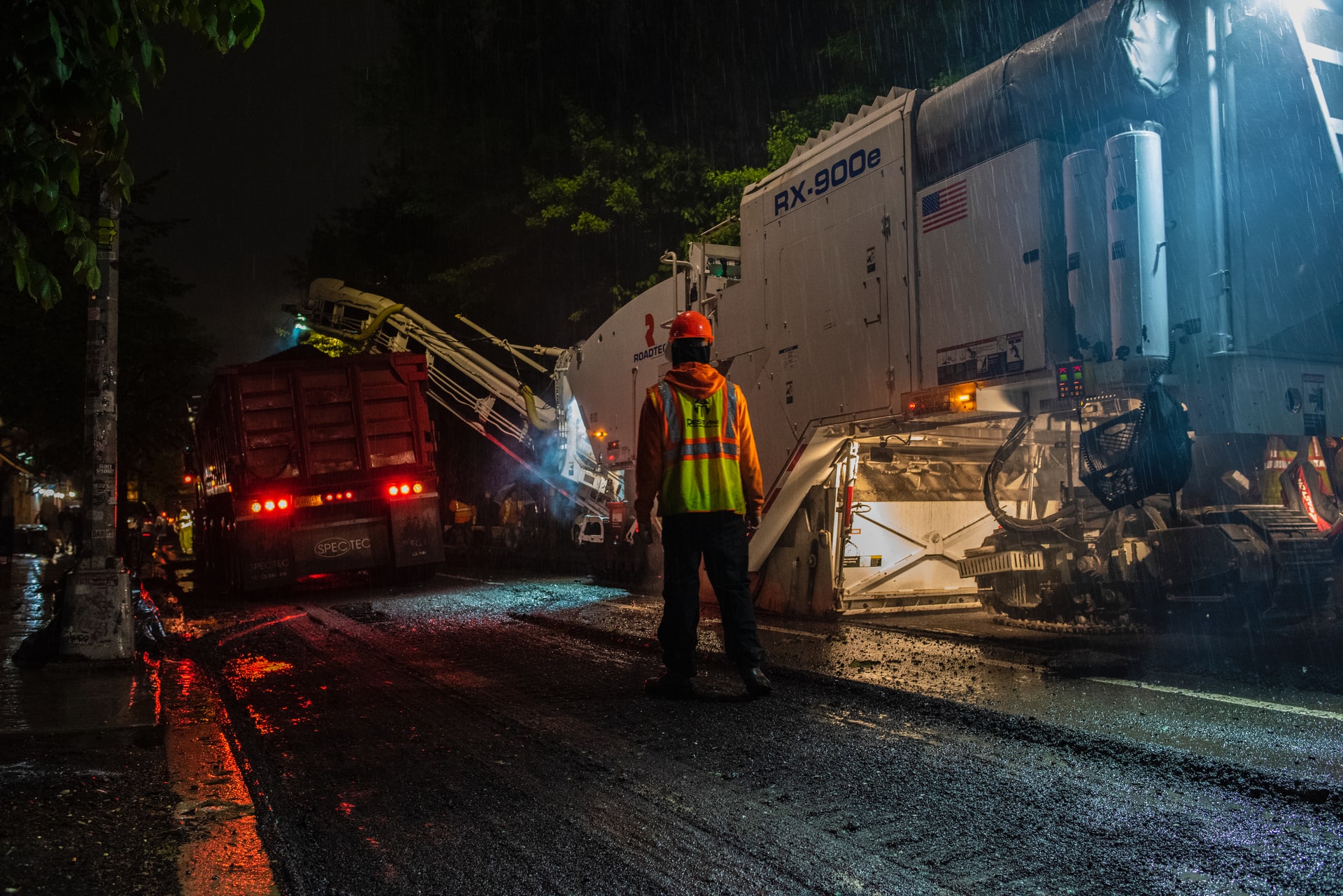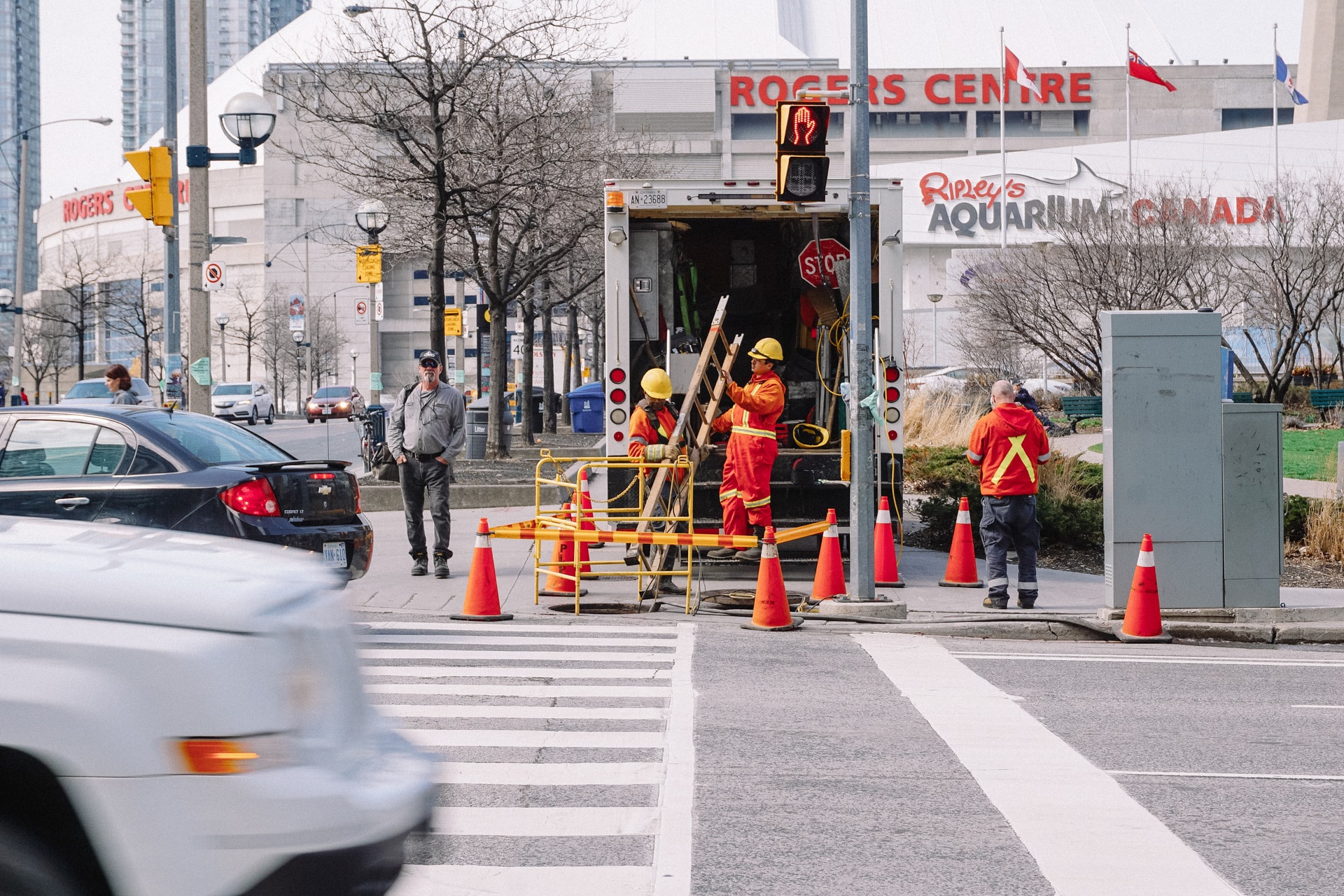Working on roads is one of the most dangerous jobs a person can have as there are constant perils a worker is exposed to.
Road work and other construction work must be designed, planned, arranged, and conducted in such a way that it provides reassuring safety for those who work on-site and for passing traffic. The work must, first of all, be planned so that the traffic is redirected and the work is not affected.
Workers play the main role as they must always remain vigilant of their surroundings, be proactive and practice safety-first habits. In this article, we take a look at ways to stay safe when working on roads.
Protective Equipment

Photo by Jeffrey Blum on Unsplash
The most important thing when working on the road is for the road workers to be equipped with the right tools and safety supplies.
Railings, protective vehicles with truck-mounted attenuators, LED directional warning lights, barriers and buffers are examples of protective equipment and tools that will prevent passing vehicles from entering the workplace. Their main purpose is to prevent serious injuries, both to road users and road workers.
As work takes place close to traffic, there is a risk of being struck and road workers, therefore, require maximum visibility to be able to feel safe and focus on their work. The essential equipment includes personal protective equipment such as hard hats, earmuffs or earplugs, highly visible clothing made of reflective or fluorescent materials, face shields, heatproof gloves, and protective footwear.
In addition, special equipment like head torches and floodlights are needed at night to improve visibility and ensure maximum safety. All this traffic control equipment will assist in signaling drivers around dangerous areas while having the roads operating normally.
Clear Information and Guidance
In general, as humans, we find it difficult to absorb a lot of information at once. Since road users usually focus on getting to their destination as soon as they possibly can, many drive too fast which makes it even more difficult for their eyes to catch road signs containing important information.
Remember to keep the signage as simple and clear as possible so that road users perceive warnings and understand how and where to drive. Having too many road signs just gets confusing.
Having a transportation management plan for every road project is also crucial. The project should consist of a temporary traffic control plan to protect workers while controlling the traffic flow around or through the work zone. This will also help manage the movement and flow of heavy equipment, vehicles, and workers.
Think About Accessibility

Photo by Maarten van den Heuvel on Unsplash
Try to look at the road workplace from the road users’ perspective. A road shutdown that they don’t feel is justified only creates irritation and greater chances for accidents. Therefore, if possible, the traffic shutdown should be adapted to the work intensity. Maybe the shutdown can look different on evenings and weekends compared to on weekdays when the work is in full swing.
The clearer and smoother the road workplace is experienced by everyone who has to pass, the greater respect they show for the ongoing work and the rules that apply. And the smaller the queues and smoother the movement, the less frustration, safety hazards, and potential collisions.
Avoiding Blind Spots
With the high level of activity and moving machinery going on in a work zone, it can be difficult to avoid blind spots. Make sure to keep eye contact with the operator at all times and signal to them if you’re planning to walk near them.
Good communication skills and signals are essential when dealing with heavy equipment and when any of the crew members want to be informed whether they should stop, wait, or are free to move in or out of the worksite.
Risk Assessment
Something that’s often forgotten but incredibly important is that road workers must make a risk assessment on a daily basis. They should think about what tasks they should perform, what risks may exist and what they should do to avoid injuring themselves or someone else. Questions you should think about before going to work on the road are:
- Am I visible enough, do I have the right protective clothes?
- What protective equipment do I need?
- Where and how does the traffic move?
- Should I be standing close to suspended equipment?
Workers should also take part in the general risk analysis and the rules of order and protection that exist in the workplace.
Final Thoughts
In general, accidents are most likely to happen if the abovementioned tips are not taken into consideration and when road workers fail to take basic precautions.
Keeping the safety recommendations in mind and practicing proper safety habits can reduce the chances of injuries or severe accidents while working on the roads.







